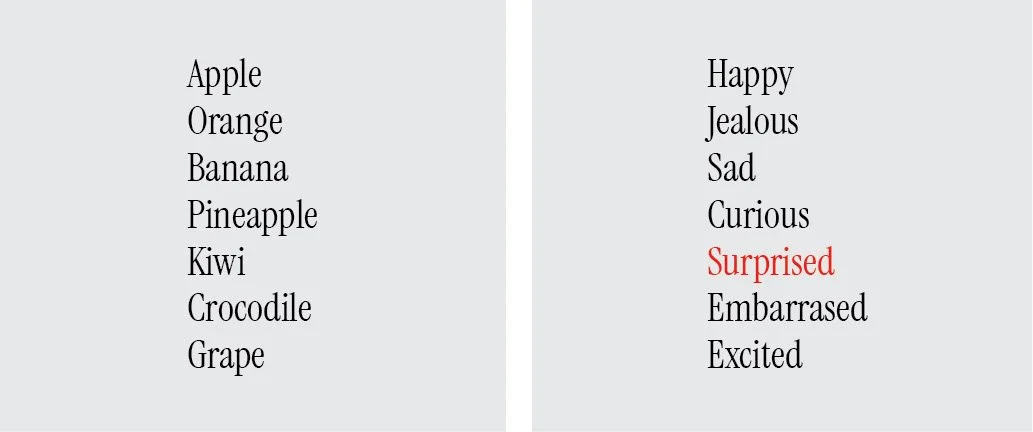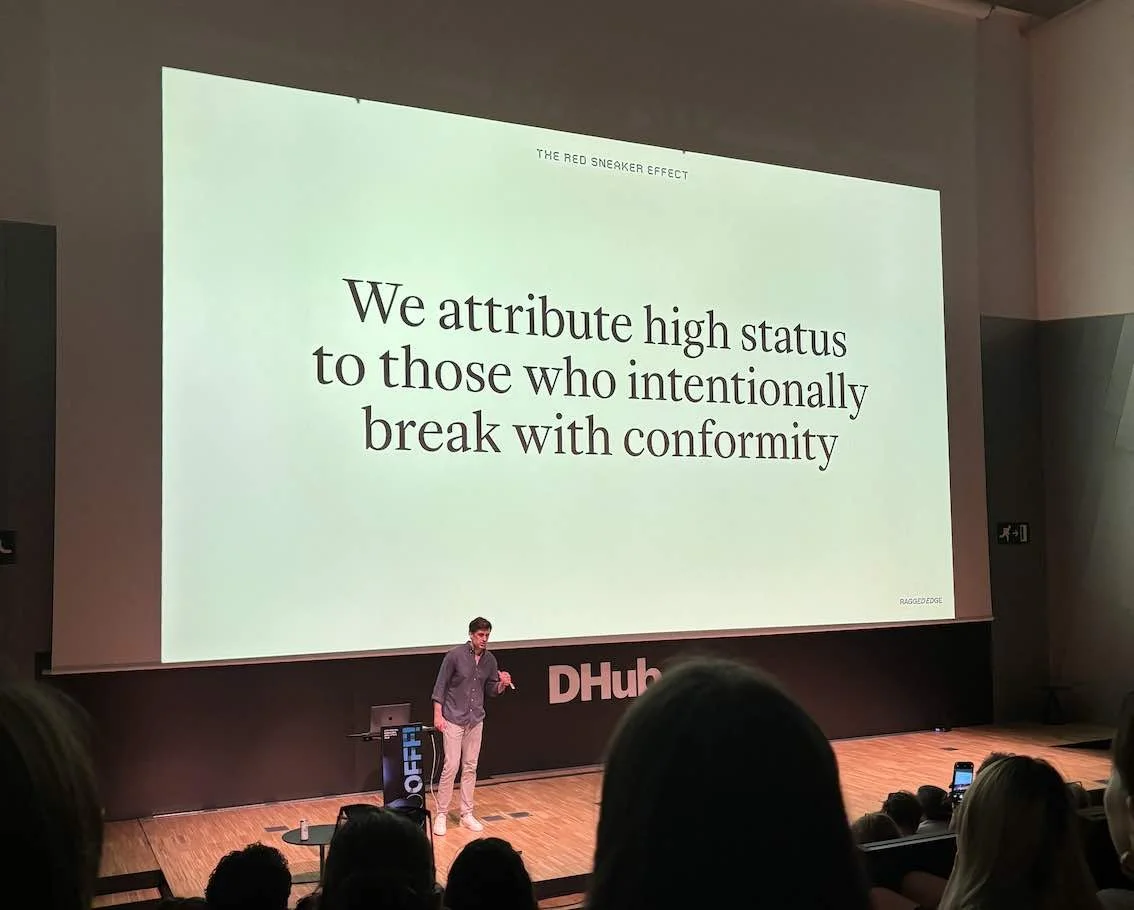Back to basics: 101 of branding
In the mix of creative brainstorms, new design trends, and evolving market theories, it’s easy to get swept away when working on branding. Collaborating with clients often leads to exciting directions but sometimes, excitement can also blur focus.
That’s when I like to press pause and revisit the basics and the core principles of branding. The simple truths that underpin effective branding. Because no matter how innovative or disruptive your brand concept is, it still needs a solid foundation to stand on.
So, What Are the Basics?
There are countless branding models and theories, but one of the most insightful summaries came from Ragged Edge at the OFFF Festival in 2024. I often find myself going back to my notes from the talk and comparing them with the branding case at hand. Their breakdown of three psychological effects that define brand behavior is a constant touchstone in my process. Here’s a fresh look at those three effects and why they matter:
The Von Restorff Effect
The Von Restorff effect, also known as the isolation effect, is a cognitive bias where a distinctive or unique item in a group is more likely to be remembered. In other words, if you present a person with a list of similar items and one item that stands out due to a difference in size, shape, color, or other characteristics, they are more likely to recall that unique item, the one that’s different. This principle tells us that the item which breaks the pattern is the one that sticks in memory.
Let’s try some examples. Imagine you are presented these items to memorize. Which ones do you think you’ll remember the next day:
What about in this one:
The same goes with branding. In a world where sameness floods our feeds and inboxes, being distinctive isn’t just a nice-to-have, it’s survival. Think of how brands like Oatly, Liquid Death, or Glossier disrupted traditional categories by showing up differently. Whether through tone, design, or format, their bold individuality became their biggest asset.
2. The Red Sneaker Effect
Coined by Harvard researchers and highlighted by Ragged Edge’s Max Ottignon, the Red Sneaker Effect suggests that people who intentionally deviate from the norm are often perceived as more powerful or competent.
Imagine this: You're in a room of executives all dressed in traditional suits, and one person walks in wearing a sharp blazer with bright red sneakers. Rather than seeming underdressed, they exude intentionality and self-assuredness. This is a style choice.
Rule-breaking can build authority if it’s intentional. Brands that challenge industry conventions, think GoPro’s lack of traditional advertising, or Patagonia’s anti-consumerist campaigns, don’t just stand out; they earn respect. But the key is doing it with purpose, not for shock value alone.
3. The mere Exposure Effect
Third effect Ottington summarized was the exposure effect. This cognitive bias tells us that “The more we see something, the more likely we are to like it.” It explains why songs grow on us after repeated listens and why fashion trends we first found odd start feeling “cool” after enough exposure.
Consistency in branding is crucial. Showing up regularly, through consistent visuals, tone, and presence across platforms, helps build trust and recognition. That’s why the strongest brands don’t constantly reinvent themselves. Instead, they reinforce their identity until it becomes second nature to the audience.
Think about a song you disliked at first, but ended up adding to your playlist. The same happens with branding, if you stay visible and recognizable, you earn a place in people’s minds (and hearts).
Back to basics, forward with intention
Revisiting the basics isn’t about playing it safe but rather about grounding your creativity. These foundational effects aren’t outdated. They’re timeless tools that give your ideas the edge they need to break through the noise.
So next time you’re lost in trend reports or flashy inspiration decks, take a breath and ask:
Are we standing out in a meaningful way?
Are we breaking norms with intention?
Are we showing up often and consistently enough to be remembered?
Branding is both art and science, gut feeling and structured thinking. And when you return to the basics, you give your brand room to grow with clarity, confidence, and purpose.
While these psychological effects give us powerful tools, remember that branding isn’t just logic and theory, most over it’s emotion. People don’t fall in love with features; they fall in love with feelings. The way a brand makes someone feel, like understood, inspired, bold, or seen, is what ultimately builds loyalty.



